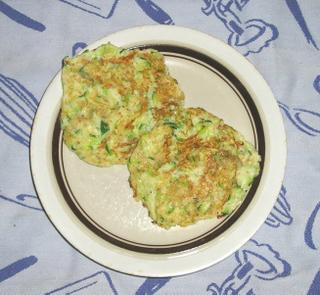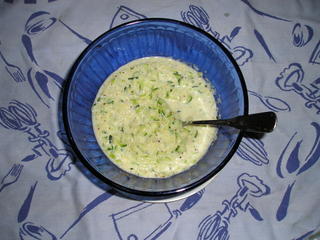Basic Biscotti
The family in question is my father's family, which means that they are mainly current or former Mennonites, which means that there will be lots of food. Most of the food is very good, if heavy, though the charm of some of it eludes me. There is, for example, a kind of trifle that is in great demand each year and that seems to be constructed mainly of graham crackers, instant butterscotch pudding, bananas and CoolWhip. I don't have any culinary WMDs quite that lethal in my arsenal, so I'll be bringing some biscotti.
I have had this particular recipe for a very long time, at least since the Gorbachev administration. I know this because the recipe comes from the Atlantic Monthly, and on the cover is a drawing of Mr. Gorbachev tied up in red tape. As far as I know, his supposed troubles had nothing to do with the biscotti from the same issue, but one can, of course, never be certain. For years and years, the magazine (because of the recipe; I didn't keep other issues of Atlantic Monthly around) went with me wherever I went, and I'm pretty sure that it's somewhere in the house right now, though for the first time in memory, I am unable to lay my hands on it. Fortunately, I have memorized the recipe.
The recipe was originally called Biscotti di Prato, after the town in Italy where the author first tasted the almond biscotti. The author was Corby Kummer, long (and perhaps still; I haven't read the magazine in ages) a contributor of food articles to Atlantic Monthly. I once saw Mr. Kummer on television, where he was a guest of Martha Stewart on one of her TV shows. It was immediately obvious that he and I have something in common other than our appreciation of biscotti. Not that there's anything wrong with that. Corby was showing Martha how to prepare some sort of coffee, and he was making it exceedingly complicated, from my point of view. Fortunately, this particular recipe, is very simple. My recipe is not exactly the one Mr. Kummer wrote, but the changes I have made are fairly minor.
Biscotti
1 cup unsalted whole almonds or pistachios
2 cups all purpose flour
1 cup granulated sugar
1/2 teaspoon baking soda
pinch of salt
Grated zest of one orange (optional)
3 eggs
1 teaspoon vanilla
Preheat the oven to 300 degrees and toast the nuts for eight minutes. Remove the nuts from the oven to cool and turn the oven to 350 degrees. Grease a cookie sheet or half-sheet pan.
In the bowl of your Kitchenaid, put the flour, sugar, baking soda, and salt. If you are using the orange zest, add it, too. Mix for thirty seconds or so at low speed.
In a bowl, combine the eggs and the vanilla and beat briefly with a fork.
With the mixer on low, pour the egg mixture onto the dry ingredients. Then add the toasted nuts. When the dough masses together, dump it out onto a lightly floured marble and knead to make sure the nuts are distributed. Cut the dough in half and roll each half into a log, about an inch-and-a-half in diameter and fifteen inches long. Transfer the two logs to the sheet pan, leaving at least five inches between them.
Bake the logs for thirty minutes. They should be starting to brown but they should still be fairly light. Remove the sheet from the oven and let cool for five minutes or so, then remove the logs from the sheets and let them cool for another fifteen minutes on a rack.
Place a log on a cutting board and cut slices at a thirty degree angle. Each slice should be approximately 3/4 inch thick. Either wash the original cookie sheet or use a clean one. In either case, do not grease. Lay the slices on their sides so that the cut side is now facing up (and down). Return them to the oven for another forty to fifty minutes, until they are dark brown.
Let the biscotti cool completely on racks, then store in a cookie tin or in plastic bags.
I tend to only use the orange zest when I am using pistachios. I made two batches this evening, one almond (no zest) and one pistachio (zested).
It is entirely possible to make this recipe by hand. Just whisk together the dry ingredients, then stir in the wet ones and knead in the nuts. For reasons that are entirely unclear to me, when I first made this recipe, years ago, it was significantly damper than it is now, and the logs spread more on the first cooking. Perhaps the measuring cups I have now are slightly larger, perhaps the eggs are slightly smaller (though what was in the refrigerator were extra large eggs), perhaps the oven is different, or perhaps I've forgotten or changed an ingredient (I am pretty sure, for example, that Mr. Kummer said to use 3/4 teaspoon of baking soda, and I can see how that might make the logs spread more when they cook, but not how it would make them more damp to begin with), though they still seem to taste the same. This is a fairly forgiving recipe, but you may have to adjust a bit in terms of how much, if any, flour you need when you're forming the logs if the dough is more or less wet than mine was.
I am not sure that there is a great deal that remains to be said about biscotti. When I first saw this recipe, relatively few people had eaten any biscotti, but they soon afterwards became very common indeed, and if they are somewhat less ubiquitous these days, they have still become part of the culinary landscape. You will often find them dipped in chocolate, and there's nothing wrong with that, either, but I prefer this very simple treatment. If you plan to dunk them in coffee (or Vin Santo, for that matter) when you eat them, do make sure that you don't shortchange the second baking. When they're properly cooked, they can be well dunked without falling apart. This will also fully restore them in the very unlikely event that they sit around long enough to get stale.
There are nowadays a zillion recipes for all sorts of biscotti (searching on "biscotti" pulls up forty-seven recipes on epicurious.com alone), and few of them now get by without putting butter in the dough, but I miss it not at all, and I'm a big fan of butter. This recipe seems like it calls for a lot of sugar, but the result is really not all that sweet. I will confess here and now that of late I have been wondering whether sugar and I are getting along as well as we used to, so tonight, for the first time ever, I substituted Whey Low for the granulated sugar, and I cannot taste the difference. I am still not entirely convinced that there is a difference, but people whose opinions I trust and who are fully conversant with the scientific method tell me that it's better for me than regular sugar, so why not?




